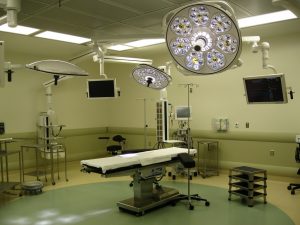1.1.6 Infection Control Practices
The term infection control is used mostly in the field of health care, but it has been used more frequently outside of healthcare in recent years. This term refers to a system of policies and procedures that form a standard of the best practices in prevention and reduction measures to prevent disease and illness from spreading. As you have seen in the videos for this chapter, the spread of infections is usually a result of pathogen transmission. Infection control practices give the healthcare community and other communities a proven way to educate everyone about these pathogens and how to prevent passing them to one another.
Believe it or not, infection control is a part of your daily life—even if you are not aware of it. For example, if you go to the hair salon, you might see combs and brushes stored in cleaning fluid. Or, if you go to pick up some fast food, you might spot a line cook wearing gloves, a hair net and a smock. And, you already practice many infection control habits in your daily life.
Practice Makes Perfect
How do you practice infection control in your daily life? Mentally check off each item that applies to you.
- I wash my hands after using the bathroom, before preparing food, or eating.
- I wash fruits and vegetables before eating them.
- I consume pasteurized dairy products.
- I cook my meat to the recommended temperatures.
- I try to keep my living environment clean of spoiled food.
- I try to keep my home free of rodents, fleas, lice and other insects.
- I try to wash soiled linens and towels regularly.
By completing the above exercise, you are demonstrating your understanding that being clean is one way to avoid infection. But what exactly does it mean to be clean?
Clean Versus Contaminated
You may already know that cleaning refers to:
…the physical removal of foreign material (e.g., dust, soil) and organic material (e.g., blood, secretions, excretions, microorganisms). Cleaning physically removes rather than kills microorganisms. It is accomplished with water, detergents and mechanical action (Public Health Ontario, 2013).
Clean surfaces are free from dirt, stain or impurities. When labelled sterile, items or areas are free of contamination by pathogens (an item may be clean, but until it is disinfected and steam sterilized, pathogens may be present).
Contamination refers to:
the presence of an infectious agent on hands or on a surface such as clothes, gowns, gloves, soiled bedding, toys, surgical instruments, patient care equipment, dressings or other inanimate objects. (Public Health Ontario, 2019)
“Hospital clean” is the measure of cleanliness routinely maintained in client/patient/resident care areas of the health care setting. Hospital clean is “Hotel clean” with the addition of disinfection, increased frequency of cleaning, auditing and other infection control measures in client/patient/resident care areas (Public Health Ontario, 2018, p. 5).

Media Attributions
- “Cardiac operating room” by Ruhrfisch is licensed under CC BY-SA 2.0

